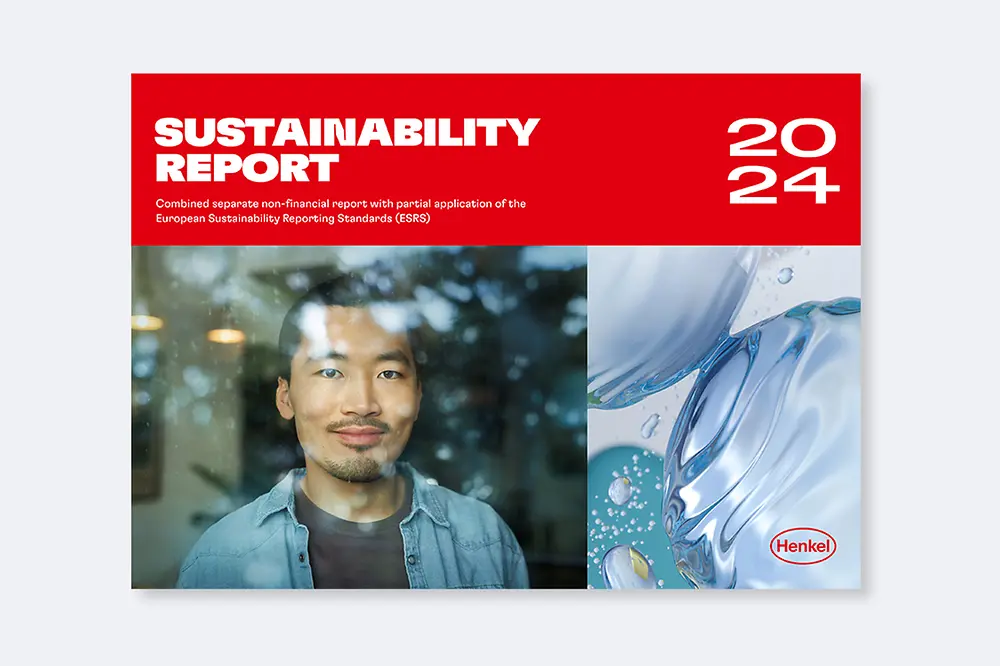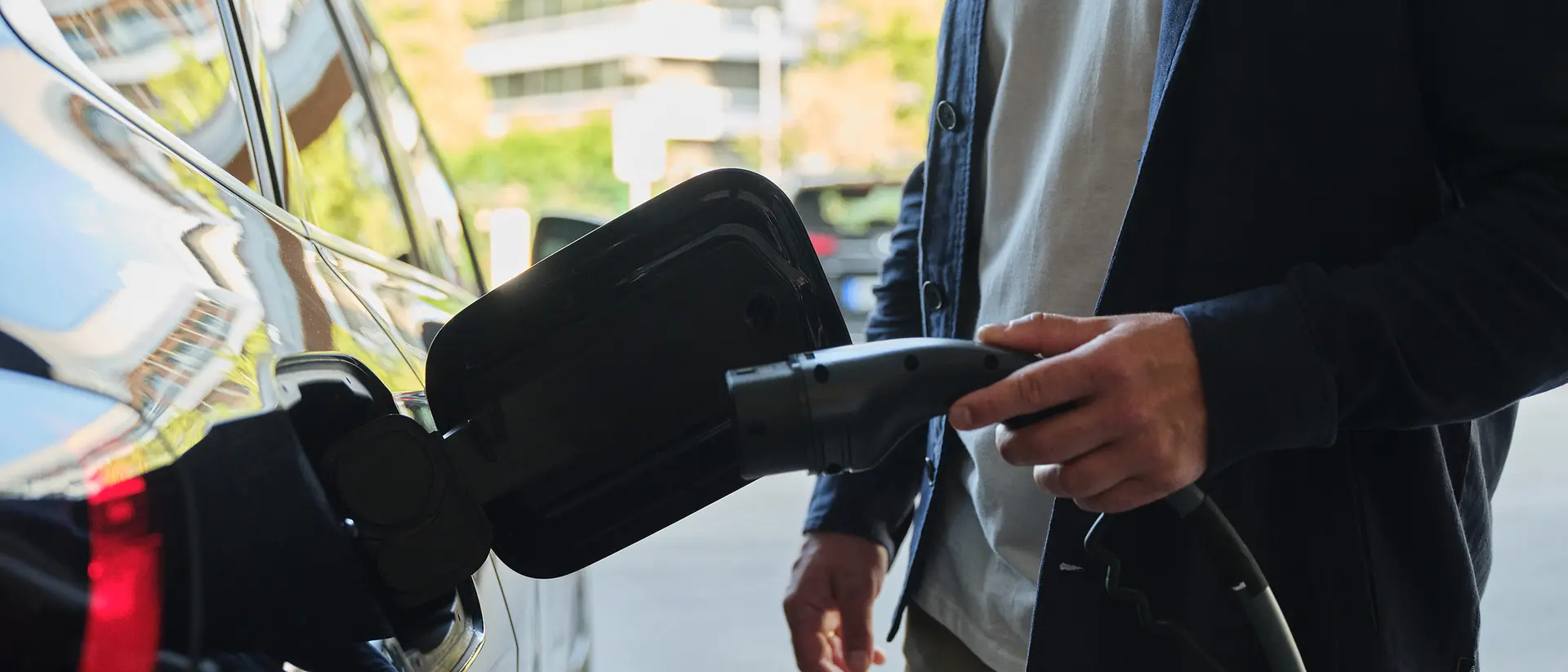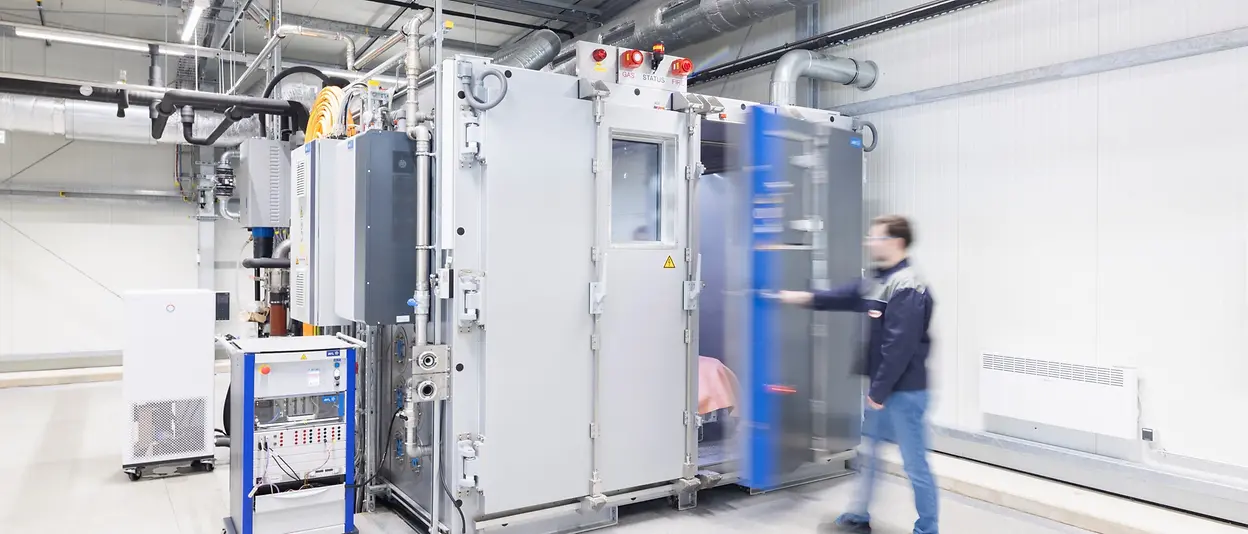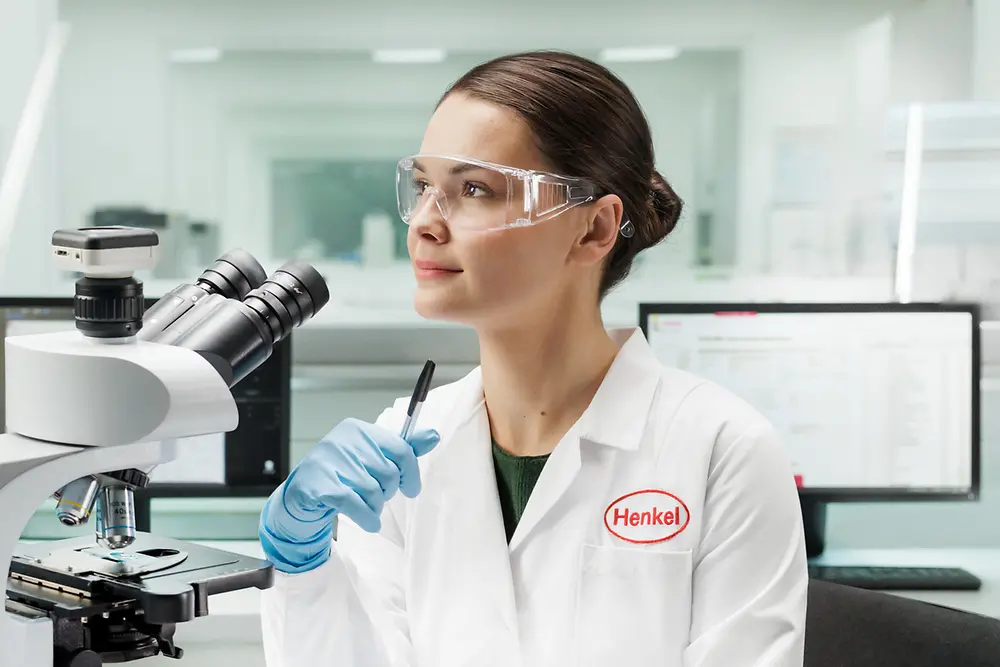Learn more about Henkel Brands & Businesses in UK & Irelands: Includes useful information about the brands, technologies and latest innovations in our business areas: Henkel Adhesive Technologies and Henkel Consumer Brands.
Fueling the future: How Henkel contributes to shape e-mobility
Driving range, safety, costs, but also recyclability – the demands on the design of batteries in electric cars are high. The continued development of the technology is therefore becoming a key success factor and will influence the future of e-mobility. As early as 2035, no new cars with diesel or gasoline engines are to be driven on roads in the European Union.

In this story, you will learn:
- How Henkel Adhesive Technologies is driving the future of e-mobility
- What the role of the “Fuel the Future” team is
- How tomorrow's innovations are developed at the Battery Test Center
- How digital engineering contributes to battery development
- What challenges batteries in e-mobility have to overcome and how Henkel provides solutions
- Why functional coatings and thermal materials are crucial for the safety of electric cars
- What Henkel's next steps are for an electric future
How Henkel Adhesive Technologies is driving the future of e-mobility
The automotive industry is entering a new era – full of challenges, but also significant opportunities. “For me, this is the most dynamic time in the history of the automotive industry. Fundamental changes are taking place,” says George Kazantzis, who has over 30 years of industry experience, including five years as Global Head of Automotive Components.
“It's an extremely exciting development,” agrees also Frank Kerstan, who is responsible for Henkel's e-mobility business in Europe. “The market is changing completely. We are committed to making a difference with our expertise and being part of the shift towards electrification by developing advanced, safe and cost-effective battery technologies.”

The market is changing completely. We are committed to making a difference with our expertise and being part of the shift towards electrification by developing advanced, safe and cost-effective battery technologies.
Frank Kerstan, Head of E-Mobility Europe at Henkel
To achieve this, the teams at Henkel are working closely with customers in the automotive industry to help them become more sustainable, for example by better meeting greenhouse gas targets through a higher proportion of e-vehicles and making the transition to electric cars easier for consumers.
This is why experts at Henkel Adhesive Technologies are researching and developing adhesives and sealants, thermal materials and functional coatings that will be used in electric cars on a daily basis. Already today, it is practically impossible to imagine the automotive sector without Henkel solutions, and not only in batteries. From the leather on the steering wheel to door panels and component assemblies to the car body – adhesive bonding is increasingly replacing welding, riveting or screwing and can reduce the weight of a vehicle by up to 15 percent.
Fuel the future – the team behind the solutions
Since 2021, there has been a dedicated team at Henkel that focuses on and specializes in e-mobility. And the name says it all – the “Fuel the Future” team has set itself the task of being a pioneer and innovator in the field of e-mobility and a strong partner for our customers in the automotive industry. As battery design varies from manufacturer to manufacturer, the industry was looking for solutions on how to protect large e-car batteries from overheating, for example. As well as how to take them apart again for repair or recycling at the end of their life cycle. “We quickly realized that we needed to build up in-depth knowledge,” says George. That was the beginning of the “Fuel the Future” team: “We assembled a team of experts from industry and science, from Korea, Brazil and India, and worked with them to develop a vision of what we wanted to build and achieve.” Ten people work in the core team, but there are now over 100 experts in total who contribute their specialist knowledge and shape the future of electromobility.
Where innovative battery technologies are brought to life
“When setting up the team, we asked: What kind of working environment do you need? What is the best way for you to work?” explains George. This is what led to the creation of the Battery Engineering Center, which was launched in September 2023 with the commissioning of a Battery Application Center. The Battery Test Center was added a year later, in September 2024. Here, customers can have their current design or development prototypes tested – and optimize them step by step. Solutions for the most important challenges are developed at the center jointly with clients, including climate simulations, rapid charging and discharging tests, leakage tests and ageing tests. “With the Battery Test Center, we can support customers right from the start of their design cycle,” says Frank. Henkel uses real test conditions to test battery cells, battery modules or entire batteries: “We want to better understand the customer's needs and be able to respond quickly to tests and advance development by drawing conclusions about the performance of the material, such as thermal conductivity or sealing properties for example.”
Faster development of electric car batteries with digital engineering
“The combined expertise of our ”Fuel the Future” team and our Battery Engineering Center makes us unique,” says George. Speed in innovation development is a crucial success driver today and perfectly produced solutions often take too long. A step-by-step approach is more promising. The new test center makes it possible to create digital twins of battery systems in order to simulate material properties under different conditions using digital material data cards and then validate the results in the real-world system. Complex data models calculate in the computer-generated CAE model instances such as: What happens when a battery cell catches fire? How does the fire protection coating react? What happens to the thermal management system during fast charging? What is the limit of the thermal material and its conductivity? This allows Henkel experts to give customers quick feedback on how small optimizations affect costs, safety and performance.

The combined expertise of our ”Fuel the Future” team and our Battery Engineering Center makes us unique.
George Kazantzis, Corporate Vice President Automotive Components at Adhesive Technologies
“With the concept of the digital twin and the virtual material card, we have changed the rules of the game,” says George. “Using the material map, AI and algorithms to calculate a solution for the customer takes less than an hour – compared to nine months in the real world.” This enables customers to speed up their development cycles and bring the next generation of batteries to the market faster. “It's reliable, it doesn't cost much and it's very fast – it's absolutely ground-breaking,” says George.
Paving the way for sustainable future in e-mobility
The two primary objectives for the experts in the ”Fuel the Future” team are sustainability and safety. “The topic of circularity is very close to my heart," says George. “We're heading towards a huge problem. We're looking at 15 million batteries in 2023 alone, and that number is growing every year. In Asia, cars are put on the road with a lifecycle of five years because by that time they are technically outdated. How should we deal with this from an environmental perspective? There are only few legal regulations. We consider it our duty to develop sustainable solutions in battery design.” The big challenge when it comes to reusing batteries in whole or in part is how to get the valuable raw materials back at the end of their time without simply shredding the entire battery, as is commonly done today. This requires adhesive bonding that can also be separated in order to take the components apart again.
“How to enable debonding has been the guiding principle of our innovation and engineering team for the last years,” says Frank. Debonding – the breaking of adhesive bonds – allows for the clean separation, preservation and reuse of individual valuable components. This can be done using three options: electricity, heat or chemistry. At this year's Battery Show Europe in Stuttgart, the team presented a new solution that makes it possible to release the bond at any time using thermal and electrical triggers. “This will be an absolute game changer – the first solution to a problem that the industry has been working on for years,” says George.
How coatings and thermal materials protect batteries from overheating
The second major challenge besides sustainability is vehicle safety, i.e. thermal management. “If one battery cell reaches a critical temperature, it catches fire and ignites the others,” says George. “Have you ever noticed how your cell phone heats up in the sun? Imagine that with an electric car battery that weighs 700 kilograms, is two meters long and one meter wide. We want to prevent that with our safety coatings.” The adhesive experts have developed thermal interface materials that are used between the battery cell and the cooling plate. The polymers dissipate excess heat from the battery cell into the cooling plate, which is permanently being cooled in liquid form. This prevents the battery from overheating during charging and operation. And this protects vehicle occupants from the risk of fire.
In the unlikely event that a battery does catch fire, the Loctite EA9400 fire protection coating is used. Specifically designed for electric vehicle batteries, they ensure that no flames penetrate the vehicle interior for up to ten minutes – valuable time for the occupants to get to safety.
The next steps towards an electric future
The Battery Engineering Center in Düsseldorf, Germany represents a pioneering project and is just the first of its kind. Henkel plans to establish a global network of Battery Engineering Centers, with future locations in the USA and China, creating a worldwide ecosystem of multidisciplinary specialist teams. “Together with our partners, we strive to develop innovations that will enable us to meet the challenges of the future and accelerate the advancement of e-mobility solutions on a global scale,” says Frank.
George believes that Henkel Adhesive Technologies is well equipped for this: “Today, we are the global market leader and are solving the biggest challenges facing the industry at present. There are still many new challenges that we have to solve – but we hold a strong position."
INNOVATION
UNDERSTANDING CHANGE, SHAPING THE FUTURE
Every innovation starts with an extraordinary idea. But an idea is only the first step. A leap forward in innovation requires more. It takes an idea that excites – the market, consumers, or our customers. The key to sustainable growth and prosperity are innovative products and technologies that address challenges, bring about change and achieve visions.
EXPLORE OUR
INNOVATION NETWORK
INNOVATION NETWORK
Our global R&D infrastructure supports close collaboration with our customers and consumers enabling us to foster innovation, drive technological advancements and shape the future of several industries. These centers serve as hubs for cutting-edge research and bringing together diverse expertise to tackle complex challenges. Collaboration between global R&D centers and local institutions is also crucial to develop innovative tailor-made solutions and targeted products for our customers and consumers.
Learn more about our global innovation network.













